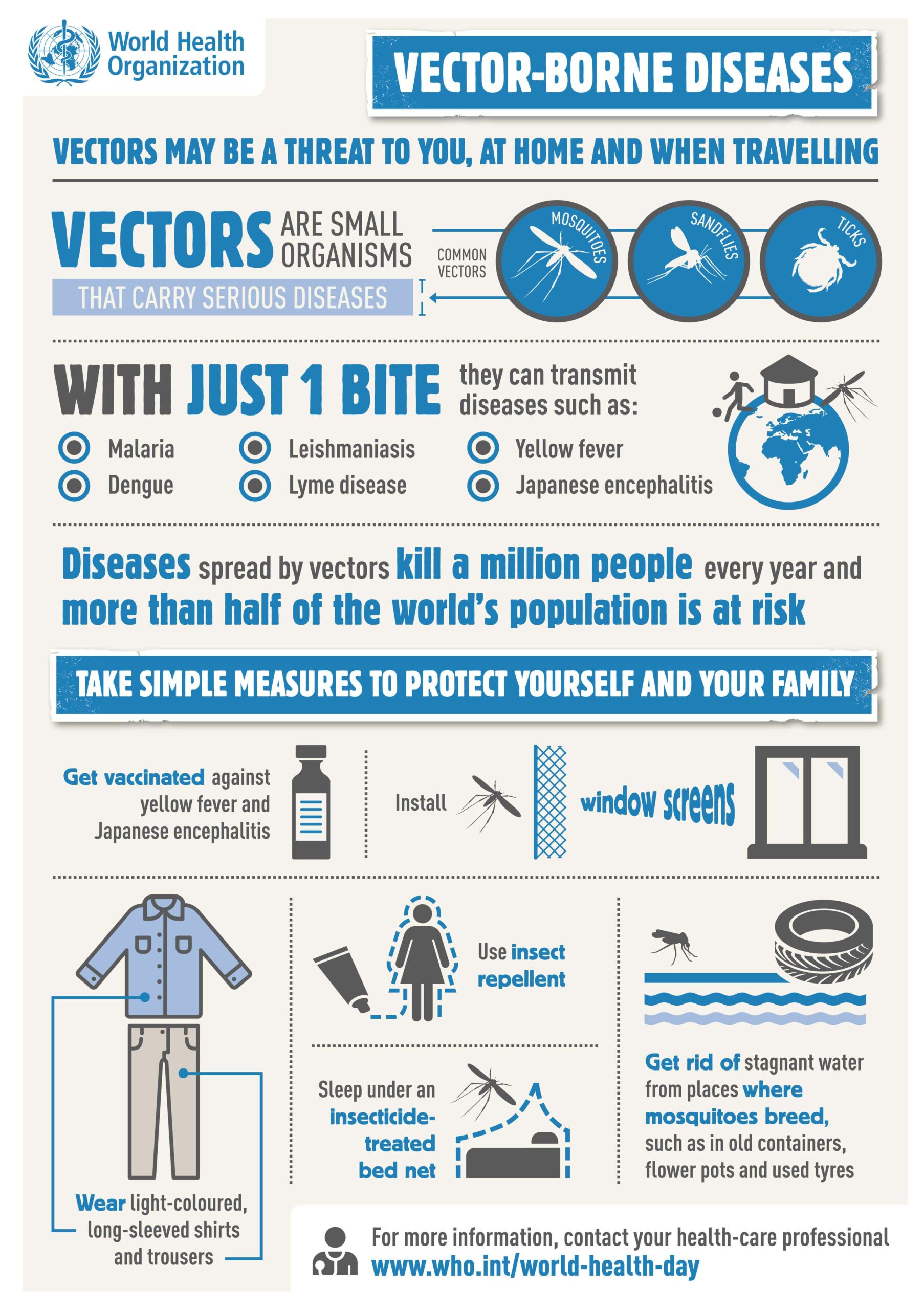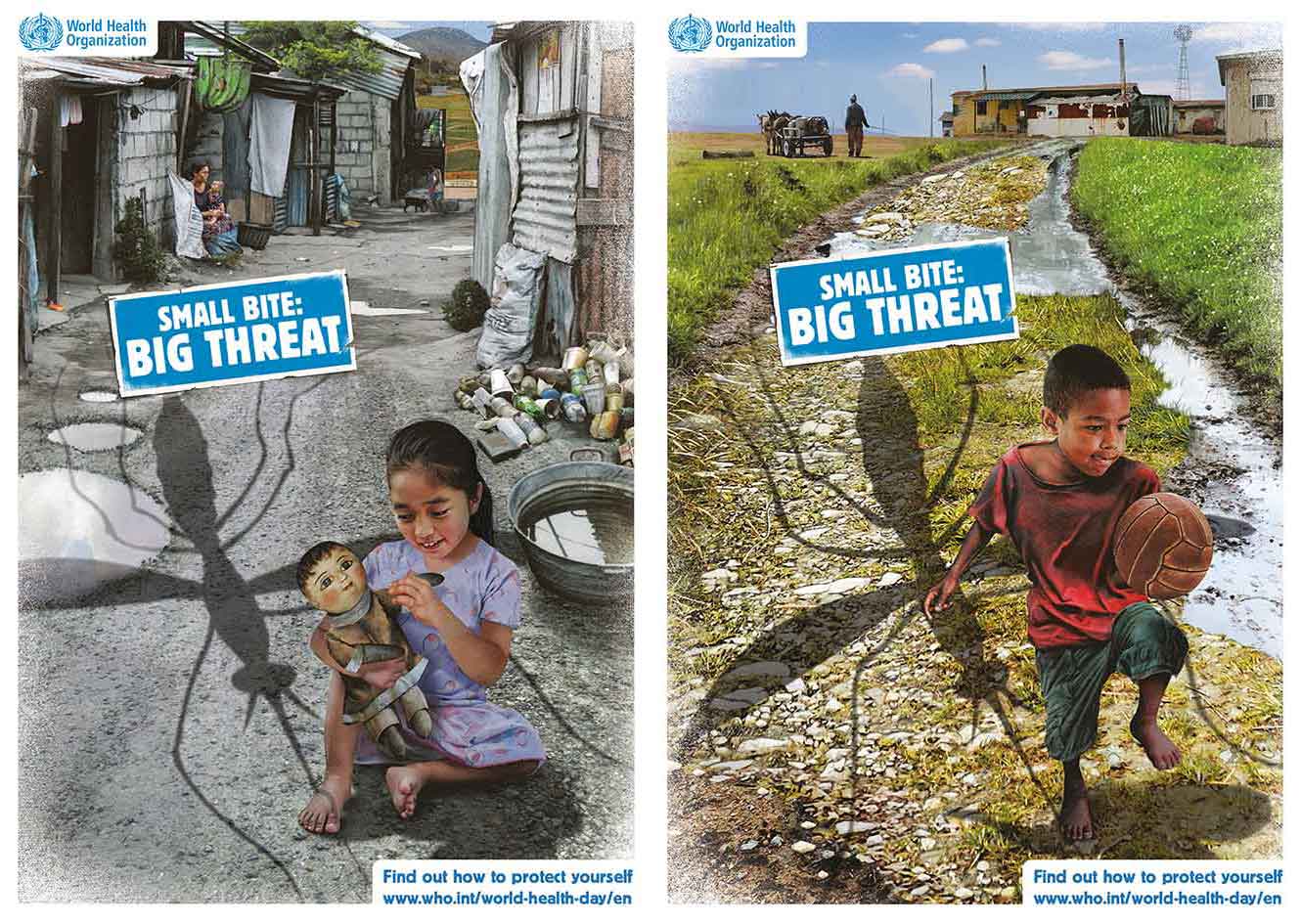 This Monday, April 7, is World Health Day, marking the 66th anniversary of the founding of the World Health Organization (WHO). The theme for this year is vector-borne diseases, one of the greatest contributors to mortality and stagnant economic growth across the developing world, particularly in tropical contexts. Vector-borne illnesses such as malaria, Chagas, yellow fever and the lesser-known dengue fever and lymphatic filariasis, put more than half the world at risk according to the WHO. A measure of mortality only tells a fraction of the story. Victims who survive can be left permanently disfigured, debilitated, or blind. Infections not only create a serious public health crisis, but also exacerbate poverty by preventing people from working to earn an income. The control of vector-borne diseases is thus top priority for global health professionals as it is central to reducing the burden of disease, spurring economic growth, and improving the quality of life.
This Monday, April 7, is World Health Day, marking the 66th anniversary of the founding of the World Health Organization (WHO). The theme for this year is vector-borne diseases, one of the greatest contributors to mortality and stagnant economic growth across the developing world, particularly in tropical contexts. Vector-borne illnesses such as malaria, Chagas, yellow fever and the lesser-known dengue fever and lymphatic filariasis, put more than half the world at risk according to the WHO. A measure of mortality only tells a fraction of the story. Victims who survive can be left permanently disfigured, debilitated, or blind. Infections not only create a serious public health crisis, but also exacerbate poverty by preventing people from working to earn an income. The control of vector-borne diseases is thus top priority for global health professionals as it is central to reducing the burden of disease, spurring economic growth, and improving the quality of life.
Traditional vector-control methods developed in the 1940s and 50s, including mosquito nets, the addition of chemicals to water-storage units, and synthetic indoor insecticide sprays have been moderately effective in bringing about a reduction in the number of infections. However, each of these methods has its drawbacks. The distribution of mosquito nets throughout sub-Saharan Africa and other parts of the developing world has been widely praised as the most efficient and cost-effective way of preventing vector-borne illnesses. Yet experts say that this initial praise has created an overreliance on nets in place of other interventions, leading to a dampened overall impact on disease prevention. Adding chemicals to drinking water storage containers can be effective in reducing mosquito larvae, however, it comes with serious risks. If the dosages of chemicals are not measured precisely, the result could be toxic to humans. Finally, and perhaps most worrisome, insecticide sprays have been losing their effectiveness as many classes of vectors are developing a resistance to them. What is needed now is a new, more integrated approach to vector-control that combines traditional methods and with newer, less mainstream strategies.
 Housing improvement as a means of controlling vector-borne illnesses is a critical, yet often under-explored medium. While a growing body of literature analyzing the nexus between health and housing and quantifying the impact of improved architectural design on health outcomes has begun to emerge, public policy has been slow to react. Renovations such as the implementation screen doors, concrete flooring, plastered walls, and new roofing into housing design can have significant and lasting impacts on vector-borne disease control and prevention. However, they have yet to enter the mainstream policy solution package. They remain marginalized in the academic and non-governmental spheres. I believe that the time is ripe to highlight this gap between policy research and practical implementation. Health experts have long-recognized the benefits of healthy homes, yet local governments in heavily affected areas have not yet invested in this solution as a primary channel of disease reduction. Controlling vector-borne illnesses requires an integrated and multi-faceted solution. This World Health Day, let’s support mainstreaming housing renovation into the policy toolkit, and closing the gap between academic research and real action on the ground. This way, we transform the way governments think of disease-control and create lasting change in the lives of millions.
Housing improvement as a means of controlling vector-borne illnesses is a critical, yet often under-explored medium. While a growing body of literature analyzing the nexus between health and housing and quantifying the impact of improved architectural design on health outcomes has begun to emerge, public policy has been slow to react. Renovations such as the implementation screen doors, concrete flooring, plastered walls, and new roofing into housing design can have significant and lasting impacts on vector-borne disease control and prevention. However, they have yet to enter the mainstream policy solution package. They remain marginalized in the academic and non-governmental spheres. I believe that the time is ripe to highlight this gap between policy research and practical implementation. Health experts have long-recognized the benefits of healthy homes, yet local governments in heavily affected areas have not yet invested in this solution as a primary channel of disease reduction. Controlling vector-borne illnesses requires an integrated and multi-faceted solution. This World Health Day, let’s support mainstreaming housing renovation into the policy toolkit, and closing the gap between academic research and real action on the ground. This way, we transform the way governments think of disease-control and create lasting change in the lives of millions.
Sarah Vassallo; Projects/Grants Officer
